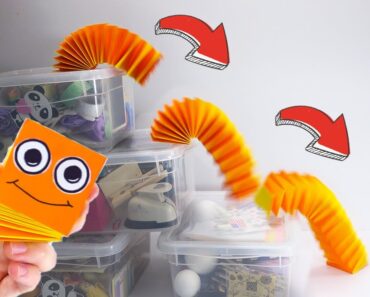The circulatory system, also called the cardiovascular system, includes the heart and blood vessels that circulate blood to supply oxygen and other nutrients to every cell in the body. It also helps remove waste products such as carbon dioxide, transport hormones, maintain constant body temperature (thermoregulation), and maintain the fluid balance in the body (1).
Blood is a major component of the circulatory system, and it contains blood cells and plasma. Red blood cells (RBCs) deliver oxygen, white blood cells play a role in preventing infections, and platelets prevent blood loss through blood clotting (2). Problems of the circulatory system can have a significant impact on several bodily functions.
What Does The Heart Do?
The heart is the main organ in the circulatory system since it pumps blood with each heartbeat. The normal heart rate can be up to 190 beats per minute in an infant, and it gradually slows down to 60–100 beats per minute in adolescents. The heart works continuously throughout the lifetime (3).
On each heartbeat, the oxygenated (containing oxygen) blood from the lungs reaches the left side of the heart, and it is pumped to the aorta to circulate throughout the body. The right side of the heart receives deoxygenated (containing carbon dioxide) blood from the body, and it is pumped to the lungs for the exchange of gases (4).
What Are The Parts And Functions Of The Vascular System?
The blood vessels carry the blood from the heart to other parts of the body and back to the heart. Blood provides oxygen, nutrients, hormones, and other substances to the tissues and collects waste products and carbon dioxide from the tissues.
The vessels of the circulatory system include (5):
- Arteries carry oxygenated blood from the heart to other parts of the body. The pulmonary artery is an exception since it carries blood containing carbon dioxide from the heart to the lungs for gas exchange. Since this blood vessel carries blood from the heart, it is called the artery.
- Capillaries are small blood vessels between the arteries and the veins that circulate oxygen-rich blood to the tissues.
- Veins drain deoxygenated blood from various parts of the body to the heart. The pulmonary veins bring oxygenated blood from the lungs to the heart.
The vascular system consists of two circulatory pathways or circuits (6).
- The pulmonary circuit includes the blood vessels circulating from the heart to the lungs and back again. The pulmonary artery carries deoxygenated blood from the heart’s right side to the lungs for gas exchange. The pulmonary veins carry oxygenated blood from the lungs to the heart’s left atrium after gas exchange.
- The systemic circuit includes the blood vessels that carry or drain blood between the heart and parts of the body. The oxygenated blood from the left ventricle is pumped to the body through the aorta and its branches. The deoxygenated blood returns to the right atrium through two large veins called the superior vena cava from the upper part of the body and the inferior vena cava from the lower part of the body.
The following organ systems also play a vital role in the functioning of the circulatory system (7).
- Respiratory system: The capillaries in the lungs help remove carbon dioxide from the blood and pick up oxygen.
- Lymphatic system: The lymphatic system drains colorless lymph (lymphatic fluid) to the circulatory system from the tissues. Every day, nearly 20 liters of plasma flow in the arteries and capillaries, and 17 liters are returned to the circulatory system by veins. The lymphatic vessels collect the remaining three-liter fluid seeping into the tissues and drain it to the circulatory system through the collecting ducts.
- Digestive system: The nutrients such as glucose, minerals, vitamins, etc. from the digested food reach the capillaries in the intestines and are sent to other organs and tissues through the blood.
- Urinary system: The urinary system filters waste products from the blood in the kidneys and excretes them in the form of urine.
The process of blood circulation continues throughout life, and the heart maintains the blood flow. The normal functioning of the heart and other related organ systems is essential for the circulatory system’s proper functioning.
What Are The Parts Of The Heart?
The heart comprises four chambers.
- Right and left atria are the two upper chambers. These chambers are separated by a wall called the interatrial septum.
- Right and left ventricles are the two lower chambers. The interventricular septum separates these chambers.
Atrioventricular valves separate the atria and ventricles on each side of the heart.
- The mitral valve between the left atrium and left ventricle
- The tricuspid valve between the right atrium and right ventricle
Ventricles and large blood vessels are also separated by valves.
- The aortic valve between the left ventricle and the aorta
- The pulmonary valve between the right ventricle and pulmonary artery
Valves open and close during a cardiac cycle, depending on the pressure difference between chambers or vessels. Heart valves also help maintain unidirectional blood flow in the circulatory system.
How Does The Heart Beat?
The autonomic nervous system controls the heart rate, depending on the requirement of the body. This means that the heart pumps slower when you are at rest or sleeping and faster during exercise so that enough oxygen reaches the tissues.
The heartbeat is generated by electrical impulses stimulating the heart muscles. These electrical signals originate from a small area in the right atrium called a sinoatrial or sinus node. It is known as the pacemaker of the heart since it controls the rate of the heartbeat and maintains the rhythmic contraction of the heart (8).
The electrical impulses from the sinus node contract the atria and move down to the atrioventricular (AV) node and then to the ventricles. The AV node is a relay station that only conducts impulses from the sinus node; it does not generate electrical impulses in normal conditions.
Performance of the heart during a complete heartbeat is called the cardiac cycle, and it has two phases, namely (9):
- Systole is the first phase when the ventricles contract and pump blood into the aorta on the left and pulmonary artery on the right side of the heart. During the systolic phase, the atrioventricular valves (tricuspid and mitral valves) on each side of the heart close to prevent the backflow of the blood to the atria. The aortic and pulmonary valves are open during this phase, and blood from the heart moves to the major blood vessels.
- Diastole is the second phase when the ventricles relax and fill with blood from the atria. During this phase, the atrioventricular valves remain open to fill the blood.
Any functional or structural problems of the valves or nodes can result in cardiac problems, leading to the deficiency of enough oxygen in the body.
What Are The Heart Sounds?
Heart sound can be heard using a stethoscope. The first heart sound (S1) is heard when the atrioventricular valves close during the systole. The second heart sound (S2) is heard at the beginning of the diastole. This is the closing sound of the semilunar valves (aortic and pulmonary valves). The S2 is often heard as a split sound due to the pressure variance in the right and left ventricles and often splits based on the inspiration or expiration (10).
Children may have a normal third heart sound (S3), which is the ventricular filling sound in the early diastole when there is a transition from rapid to slow filling (10).
The fourth heart sound (S4) is an abnormal sound due to atrial contraction. This is usually heard in the late diastolic phase when the compliance of the ventricle is less. Murmurs are sounds created by the turbulence of blood flow in the heart, which can be in any phase depending on the cause (10).
Problems Of The Circulatory System In Children
Children may have a cardiovascular disease from an early age. The circulatory problems can be grouped into two categories, the congenital conditions present at birth and the acquired conditions that occur after birth (11) (12).
1. Congenital heart defects
Congenital heart defects (CHD) include various structural abnormalities of the heart or great vessels present at birth. Nine in every 1,000 babies born in the United States have a congenital heart anomaly (13). Mild to severe congenital heart defects are seen in newborns.
Abnormal or incomplete development of the heart during fetal development is the cause of congenital heart defects. It can be due to genetic factors or exposure to infections, certain medications, toxins, etc. during fetal life.
Murmurs are whooshing sounds that are a common finding in heart defects. Severe defects may require surgical repair during the first year of life.
2. Arrhythmia
Arrhythmias (rhythm disorders) are abnormal rhythms of the heartbeat. They can be irregular, too fast, or too slow due to congenital or acquired problems. Based on the type, arrhythmias are corrected using medications, surgery, or pacemaker.
3. Cardiomyopathy
Cardiomyopathy is the disease of the heart muscle that affects the pumping function of the heart. It can be caused by the hardening or weakening of the cardiac muscles. Ventricular muscles are more prone to myopathy, and it may often lead to cardiac (heart) failure. Most children with cardiomyopathy require heart transplantation, and if left untreated, it can be fatal.
4. Coronary artery disease
Coronary artery disease is caused by the limitation of the coronary arteries’ blood flow, mainly due to the formation of plaques. The blockage of coronary arteries may cause myocardial infarction (heart attack) due to damage of heart muscles from lack of oxygen.
Although coronary artery disease and heart attacks are common in adults, certain conditions such as congenital heart defects, inborn errors of metabolism, coronary artery anomalies, rheumatic fever, etc., may cause it in children.
5. Hypercholesterolemia
Hypercholesterolemia is a condition in which there is high cholesterol in the blood. Low-density lipoprotein (LDL/bad cholesterol) is a type of cholesterol that increases the risk of heart diseases. On the other hand, high-density lipoprotein (HDL/good cholesterol) has protective effects.
A child with total cholesterol levels exceeding more than 200 mg/dL may have an increased risk of developing heart diseases. Usually, 10% of teens have high cholesterol that increases the risk of cardiovascular diseases. Regular physical activities and a healthy diet could prevent this condition in most children.
6. Hypertension
Hypertension or high blood pressure in children can be due to genetic factors, heart or kidney problems, obesity, physical inactivity, or dietary factors. High blood pressure may often cause heart diseases and stroke in children.
7. Kawasaki disease
Kawasaki disease is also called mucocutaneous lymph node syndrome, which causes inflammation of the walls of blood vessels. It also affects the lymph nodes, skin, and mucous membranes. It is more common in children than in adults.
If the coronary arteries are inflamed, it may cause bulging (aneurysms) of the vessels and increase the risk of clot formation. The heart valves, muscles, and outer membrane (pericardium) can also be inflamed in Kawasaki disease, causing arrhythmias and abnormal functioning of the heart valves. All these pathologies could result in a heart attack or cardiac failure in children.
8. Rheumatic heart disease
Rheumatic heart disease includes a group of acute (short-term) or chronic (long-term) heart damages caused by rheumatic fever. Children aged 5 to 15 years are more vulnerable to rheumatic heart disease.
Rheumatic fever is a complication of untreated group A streptococcal infection such as strep throat or scarlet fever. The immune system makes anti-streptolysin O antibodies against the bacterial toxin that often cross-reacts with tissues of the heart, joints, skin, or central nervous system, resulting in pathologies.
The immune attack could lead to inflammation and weakening of cardiac muscles, and thickening and scarring of heart valves. Proper antibiotic treatment during the strep infection can prevent rheumatic heart diseases.
9. Vascular diseases
The diseases affecting blood vessels are called vascular conditions, and they may affect the blood flow in the body. Injuries, inflammation, or atherosclerosis (buildup of plaques), and blood clots are significant causes of vascular pathologies. Children may also have inherited vascular diseases affecting the vessels.
10. Stroke
Stroke is a condition in which there is an interruption or decreased blood supply to the brain, leading to a lack of oxygen and nutrients in the brain cells. The blockage of vessels causes ischemic stroke, and the spillage of blood from bursts of vessels causes a hemorrhagic stroke.
Although it is rare, children can have a stroke due to various conditions such as hypertension, high cholesterol, and other cardiovascular diseases. It is a medical emergency since the brain cells may die within minutes without oxygen.
How To Keep Your Child’s Heart Healthy?
The following measures may help your child keep their heart healthy and prevent most of the lifestyle-induced cardiovascular diseases (14).
- Exercising regularly
- Eating a nutritious diet
- Maintaining a healthy weight
- Taking regular preventive medical care
- Avoiding smoking and alcohol use
- Getting enough sleep
The congenital heart defects may not be preventable if they are already present at birth. Proper preconception and prenatal care could prevent the majority of such anomalies in children. Medical and surgical interventions could provide relief from symptoms and improve the quality of life for children with CHD.
You may discuss with your child’s pediatrician if there are incidences of heart diseases in the family, especially at young ages. Seek immediate medical care for cardiovascular signs and symptoms such as chest pain, breathing difficulties, and fainting. Early interventions and precautionary measures could delay or prevent the onset of cardiovascular diseases. Lifestyle modification and timely treatment could help avoid most of the pediatric heart diseases.

































